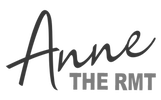|
Cupping and Gua Sha have become popular treatments for:
|
|
Cupping therapy is based around the idea that suction from the cups draws the skin up and mobilises blood and energy around the body, encouraging the body’s natural healing process. Gua Sha has also been found to be helpful in increasing circulation and energy flow. Usually used in conjunction with other treatments, these tools promote blood and lymph circulation, and may be effective for the treatment of:
and promoting:
Precautions Cupping and Gua Sha are generally very safe to use and has no side effects. However, these tools will not be used if any of the following apply to you:
|
|
|
Traditional Glass "Fire" Cups:
glass globes, mostly used by Traditional Chinese Medicine (TCM) practitioners. These cups come in a variety of sizes and are made of thick glass. Fire is introduced into the cup to extract air, and immediately placed onto the skin to produce suction. These do not burn, but they can get a very deep pull on them. Often these are used still for clearing lungs, or healing organs by placing them on accupoints or organ nerve bundles that feed the affected organ in need of healing. |
|
Hard Silicone or Plastic Pump Cups:
these are used with a pump attached to the cup to create a suction. I generally use these for deeper treatments such as sports or injury rehabilitation, as well as pre and post sport event treatments. These are used in a pattern for the muscles being addressed, and then the corresponding joints and muscles are put through range of motion and passive mobility movements. The goal of this treatment is to hydrate and bring fresh blood to the soft tissues which aids in health and healing. This treatment generally leaves red circle marks. They are more like a hickey, but not a bruise. Not painful to touch. The level of darkness (or lightness) indicate the amount of blood flow or stagnation in the area. The marks take anywhere from a couple of days to a couple weeks to completely fade, depending on the individual. |
|
Soft Silicone Cups:
these pliable cups create suction by depressing or contorting them and pulling the skin up into them. These can be used for deeper tissue work, but are also used for areas where it is harder for hard cups to adhere (like elbows and knees). These cups may be used for the same protocol as the hard silicone cups. I use these cups in most of my treatments to address fascial release and to bathe muscles in fresh blood for healing. These generally do not mark as much as the hard silicone, but depending on the body, they may leave a dark circle as well. |
|
Facial Cups (for the face):
These small but specifically made cups are for work on the tissues of the face. As our skin is thinner on this area, the cups are smaller, and the technique differs from traditional cupping therapy. This is a wonderful addition to a face massage for post operative work, sinus issues, and of course for relaxation. These are often used with lymphatic work performed on the head, face and neck. Read more here. |
|
Visit my RESOURCES page for stretching + exercise videos, health care providers in our area and interesting articles. |
contact |
social |
youtube, instagram + facebook:
Anne the RMT |
practice @ |
59 Bruce Street - Wortley Village
London, Ontario N6C 1G6 CLiENT PARKING AVAILABLE |
